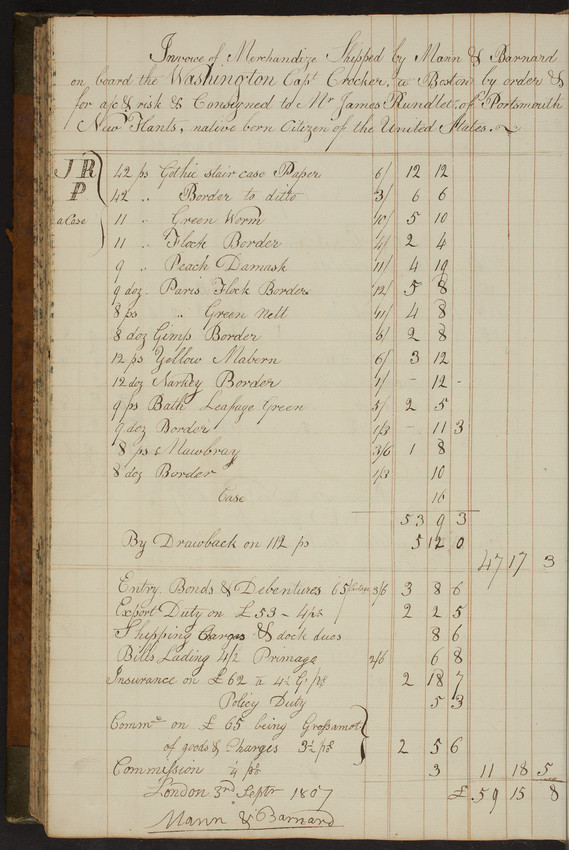 Rundlet-May House
Rundlet-May House
Wallpapers: Fashion Forward
The front rooms in the Rundlet-May House were originally the formal parlor and the dining room. At some point, the dining room was moved to the back of the house and the front room became a sitting room. In the 1930s, the walls were painted white however, a large pier mirror that hung between the front windows was not removed from the wall for the painting project. Years later, when Historic New England curators were investigating the room, they found a portion of the “Green Worm” wallpaper that James Rundlet had ordered in 1807, behind the mirror.
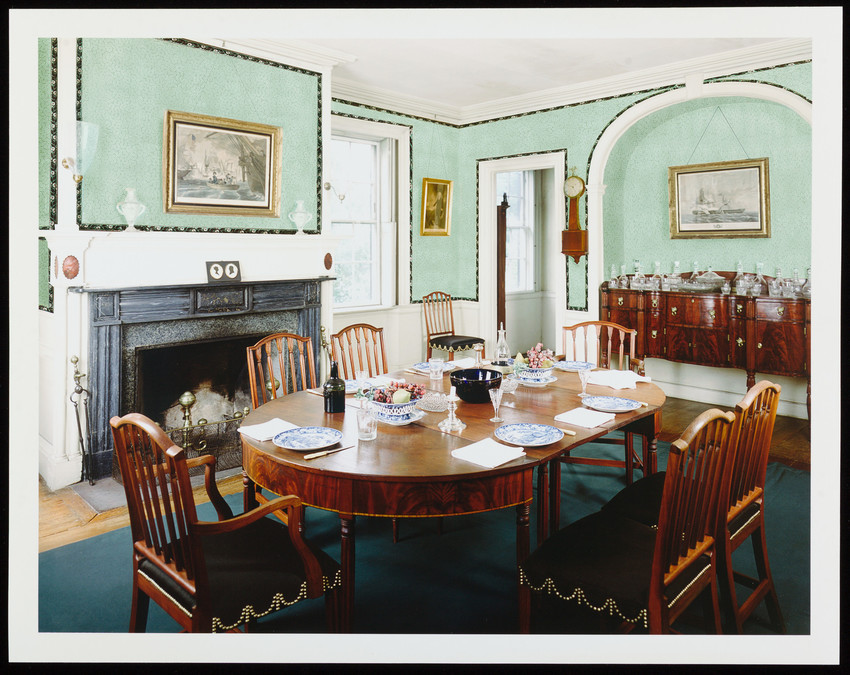
The digital rendering above shows the fanciful wallpaper and how it would have looked when it was installed by the family for their newly built house.
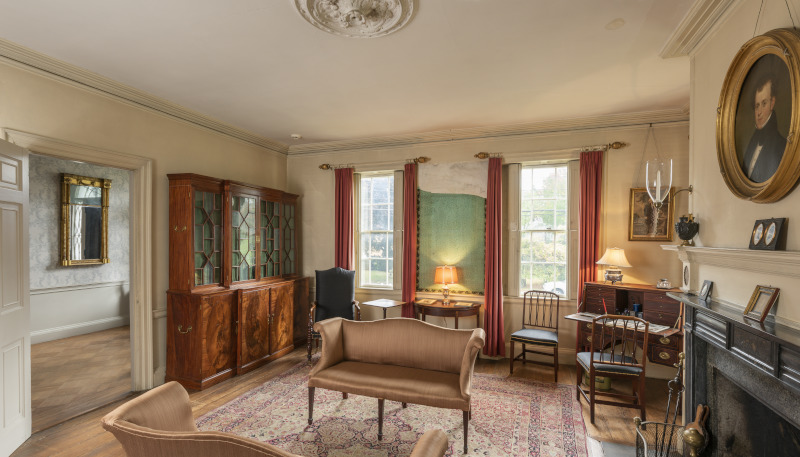
The sitting room, today, with the remnant of Green Worm wallpaper where the wall mirror had once covered it.
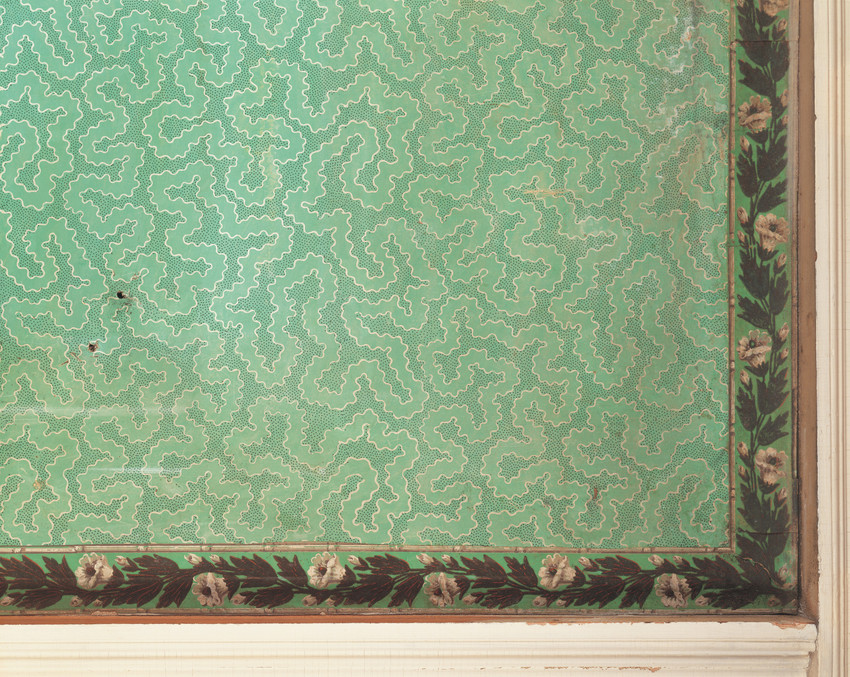
Peach Damask Wallpaper
James Rundlet ordered seven different wallpaper patterns and complimentary borders directly from London to decorate his new home on September 3, 1807, while the construction of his house was being completed. Rundlet kept detailed accounts of the building expenses for his impressive three-story house, as can be seen by the invoice below. Of the total construction cost of $12,604.47, approximately $283 was spent on 112 rolls of wallpaper. The paper and border identified as “Peach Damask” and “Paris Flock Border” on the shipping invoice were hung in the best parlor when Henry Bufford was paid for “painting and papering the parlor” in September 1809 and remain on the walls today.
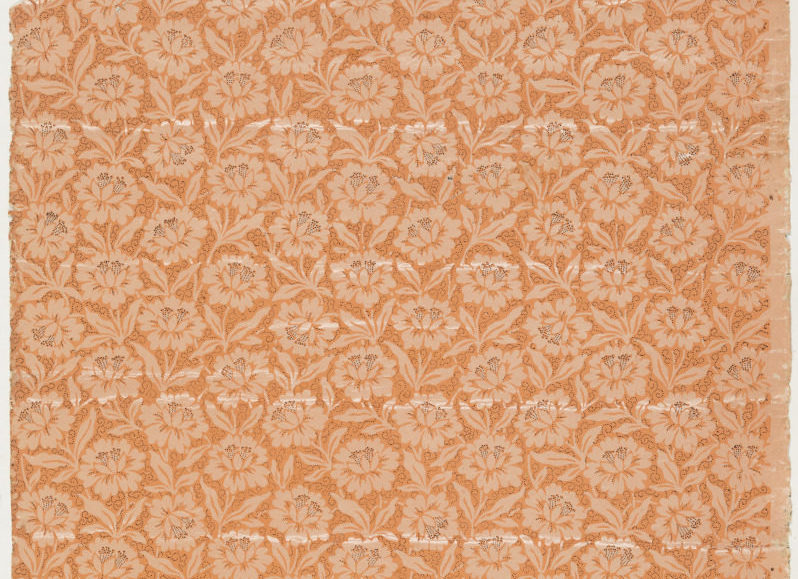
The flocked border of the parlor wallpaper, an unused sample of it found in the attic of Rundlet-May house is now in the Historic New England collection, and shows a festive tactile approach to the leaves on the floral motif.
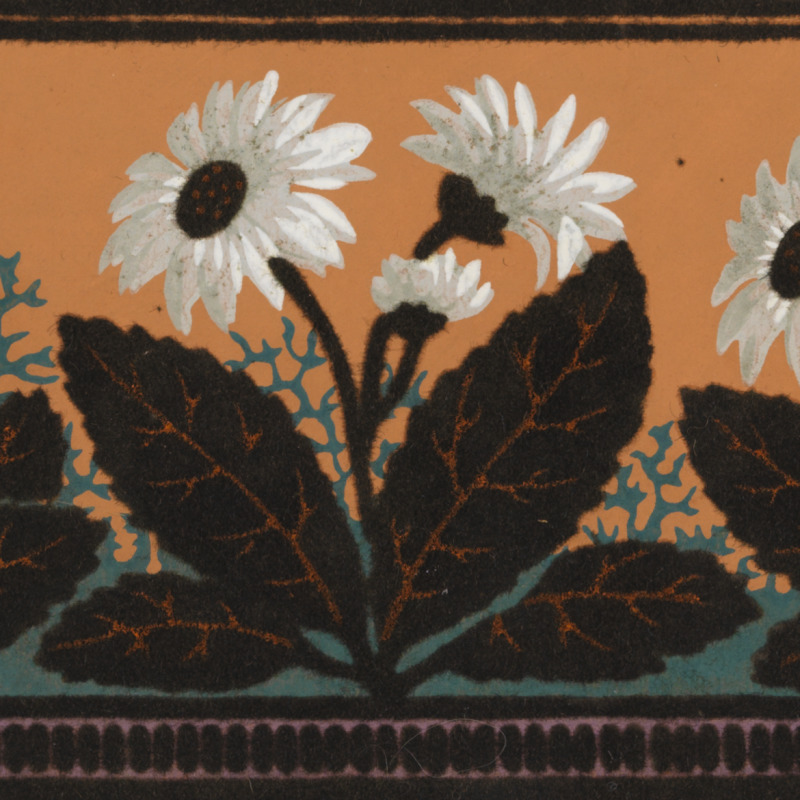
Lately Received from England
Shipping Invoice
Dated September 3, 1807, this shipping invoice provides the names and prices for seven patterns and the borders chosen to go with them. “Peach Damask” and “Paris Flock Border” were the most expensive paper hangings purchased by Rundlet and were reserved for the best room in the house.
Trade and Decorative Arts Gallery
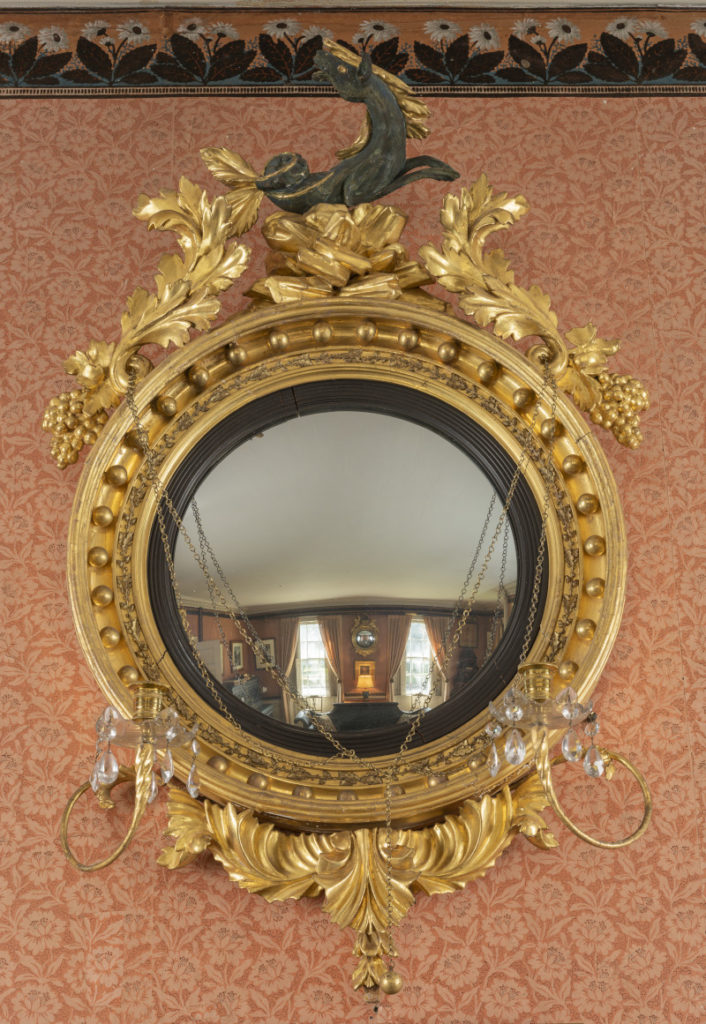
From an export cabinet with provenance from the 1876 International Exposition of Philadelphia, a floral-encrusted porcelain vase that was a wedding present to James and Mary Morison May, a girandole which illuminated the room with candlelight, a small sewing implement in the shape of a bird; the role that world trade played in creating Rundlet-May House is remarkable and thorough. These treasured possessions took on extra meaning; they told stories of the men and women who lived with them every day.
